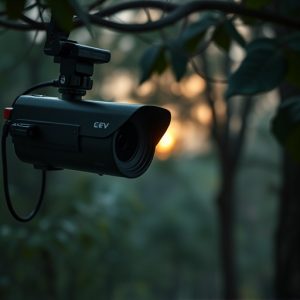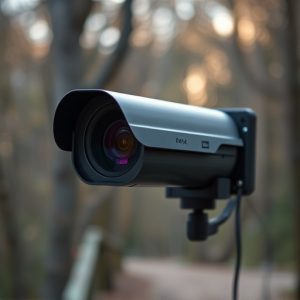Discreet Camera Installation: Best Practices for Tenant Surveillance
Renters seeking enhanced security without compromising privacy can benefit from discrete security ca…….
Renters seeking enhanced security without compromising privacy can benefit from discrete security cameras, which offer advanced features while maintaining an unobtrusive presence. Navigating local legal landscapes and obtaining consent is crucial to avoid fines or legal action. Choosing high-quality, compact cameras with minimal visual impact, wireless connectivity, and remote access provides comprehensive coverage. Strategic placement balances optimal protection with privacy concerns, while regular maintenance ensures the network's integrity and security.
“Enhance your rental property’s security with a covert camera network—a silent guardian that discourages crime. This comprehensive guide explores best practices for installing discrete security cameras, catering specifically to renters. Learn how to navigate legal considerations, choose the right equipment, and strategically place cameras for optimal coverage without sacrificing privacy. Discover effective maintenance and monitoring techniques to ensure your covert network remains a reliable deterrent.”
- Understanding Discrete Security Camera Networks
- Legal Considerations for Renters Installing Cameras
- Choosing the Right Equipment for Discreet Surveillance
- Placement Strategies for Optimal Coverage and Privacy
- Maintaining and Monitoring Your Covert Camera Network Effectively
Understanding Discrete Security Camera Networks
For renters considering a covert camera network, understanding discrete security cameras is key. Unlike traditional systems that are prominent and often serve as deterrents, discreet security cameras blend seamlessly into their surroundings, making them ideal for those who want to maintain privacy while enhancing security. These cameras offer advanced features like night vision, motion detection, and high-definition video quality, all without drawing unnecessary attention.
Discrete security cameras for renters provide a flexible and cost-effective solution. They can be easily installed in various locations within a rental property, such as hallways, entryways, or common areas, allowing for comprehensive monitoring without compromising aesthetics. This option is particularly appealing for those looking to protect their belongings while adhering to landlord policies that may restrict permanent security system installations.
Legal Considerations for Renters Installing Cameras
When considering discrete security cameras for renters, it’s crucial to navigate the legal landscape carefully. Every jurisdiction has specific laws governing surveillance and privacy rights, so understanding local regulations is essential before installing any camera system. Renters must ensure they have permission from both the property owner and all occupants to install cameras, especially in common areas or shared living spaces.
Avoiding potential legal issues requires transparency and open communication. Discreetly placing security cameras without proper authorization can lead to serious consequences, including fines or even legal action. Instead, renters should focus on visible signage that alerts individuals to the presence of cameras, promoting a sense of awareness and compliance with privacy laws.
Choosing the Right Equipment for Discreet Surveillance
When it comes to installing a covert camera network, choosing the right equipment is paramount for discreet surveillance. For renters or those seeking temporary security measures, investing in high-quality, compact, and non-intrusive cameras is key. Modern discrete security cameras are designed with minimal visual impact, making them easy to hide and significantly reducing the risk of detection by individuals or pets. These cameras often come equipped with advanced features like motion sensors, night vision capabilities, and wireless connectivity, ensuring comprehensive coverage without compromising on privacy.
Additionally, selecting equipment that offers remote access via smartphone apps or web portals allows for continuous monitoring from anywhere at any time. This flexibility is particularly beneficial for renters who need to keep an eye on their properties while away. With the right gear, you can create a robust network that provides peace of mind without sacrificing discretion.
Placement Strategies for Optimal Coverage and Privacy
When planning a discrete security camera network installation, strategic placement is key to achieving optimal coverage while maintaining privacy concerns. For renters considering such measures, it’s crucial to understand that cameras should be positioned in areas where they offer clear visibility and deter potential intruders, without infringing on personal spaces or capturing sensitive data. This often involves installing cameras at entry points, like doors and windows, as well as in common areas accessible to all occupants.
In living spaces, a best practice is to mount cameras high up, either on walls or ceilings, ensuring they can capture clear footage of entrances and exits without compromising the privacy of individuals inside. Additionally, employing directional sensors and motion-activated features can further enhance coverage while minimizing unnecessary recording, making it an ideal solution for renters who want to maintain their privacy with discreet security measures in place.
Maintaining and Monitoring Your Covert Camera Network Effectively
Maintaining and monitoring a covert camera network effectively is crucial for ensuring its integrity and the security it provides. For renters considering Discrete Security Cameras, establishing a robust maintenance routine is essential. Regularly check each camera’s functionality, ensuring clear images and audio capture. This involves testing power connections, adjusting lenses for optimal view, and verifying signal strength to prevent any interference. Additionally, monitor network performance by keeping an eye on data transfer rates and storage capacity to ensure smooth video recording and retrieval.
Implementing a monitoring system that allows remote access is a best practice. This enables you to keep an eye on the network from anywhere at any time, receiving alerts for any suspicious activity or potential issues. Regular updates of software and firmware are also vital to patch security vulnerabilities and enhance camera performance. By adhering to these practices, renters can maintain a discreet yet efficient security system tailored to their needs.
When implementing a discrete security camera network, it’s crucial to balance effective surveillance with respect for privacy. By understanding legal boundaries, selecting appropriate equipment, strategically placing cameras, and adopting efficient maintenance practices, renters can create a robust and discreet system that enhances safety without infringing on personal space. Adhering to these best practices ensures the optimal use of discrete security cameras for renters while navigating legal considerations and maintaining ethical standards.


